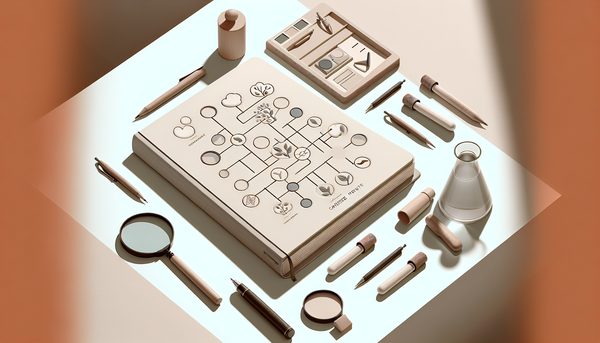How to Get Unstuck in Your Career
How to Get Unstuck in Your Career
That familiar feeling of dread on a Sunday evening, the lack of motivation when you open your laptop, the sense that you are on a treadmill going nowhere fast. If this sounds familiar, you are likely feeling stuck in your career. It’s a common experience, a career plateau where the path forward seems foggy and uninspiring. But here’s the good news: feeling stuck is not a destination; it's a temporary stop. This guide will provide you with a comprehensive roadmap to diagnose the reasons behind your career stagnation and give you actionable, SEO-optimized strategies to reignite your professional life and get moving again.
Pinpoint the “Why”: Understanding the Root Causes of Your Career Stagnation
Before you can engineer your escape, you must first understand the landscape of your current situation. Why do you feel stuck? Getting to the root cause is the critical first step towards meaningful change. This section will help you conduct a thorough self-assessment to pinpoint the precise reasons for your career inertia.
Conduct a Career Self-Audit
A self-audit is like a diagnostic test for your professional life. Set aside some quiet time to reflect on your current role and career trajectory. Ask yourself probing questions: What aspects of my job used to excite me that no longer do? When was the last time I felt genuinely challenged or proud of my work? What are the specific tasks that drain my energy the most? Write down your answers without judgment. The goal is to gather data and identify patterns. This raw, honest feedback is the foundation upon which you will build your strategy.
Identify Skill Gaps and Development Areas
Sometimes, feeling stuck is a direct result of skill stagnation. The skills that got you to your current position may not be the ones that will propel you to the next level. Analyze your industry and look at the job descriptions for roles you find appealing. What skills, technologies, or certifications are consistently mentioned that you don't currently possess? Identifying these skill gaps provides a clear direction for professional development. It transforms a vague feeling of inadequacy into a concrete action plan for upskilling.
Re-evaluate Your Career Values and Priorities
What you valued in a job five years ago may not be what you value today. Priorities shift as we grow and experience life. Perhaps work-life balance has become more important than title, or maybe purpose-driven work now trumps a higher salary. Make a list of your core career values. These might include autonomy, creativity, financial security, intellectual challenge, or making a social impact. Now, evaluate your current role against this list. A mismatch between your values and your daily work is a significant, yet often overlooked, cause of career dissatisfaction.
Strategize Your Escape: Proactive Steps to Reignite Your Career
With a clearer understanding of why you feel stuck, it's time to shift from diagnosis to action. This section provides concrete, proactive strategies to start building momentum and craft a more fulfilling professional life, right from your current position.
Master the Art of Job Crafting
You may not need a new job to find new satisfaction. Job crafting is the subtle art of reshaping your existing role to better align with your skills, interests, and values. Look for opportunities to take on new responsibilities that excite you. Can you automate a tedious task to free up time for a project you're passionate about? Can you collaborate with a different team to gain new perspectives? Proactively modifying your tasks and relationships at work can dramatically increase your engagement and sense of ownership, making your current role feel fresh and new.
Expand Your Horizons Through Networking and Mentorship
Your network is your professional lifeline. If you've been heads-down in your current role, it's time to look up and connect. Reach out to colleagues in other departments for virtual coffee chats. Attend industry webinars and participate in the discussion. Seek out a mentor, someone whose career you admire and who can offer guidance and a fresh perspective. A strong network not only opens doors to new opportunities but also provides the support and insight needed to navigate a career transition effectively.
Embrace Continuous Learning and Upskilling
Armed with the knowledge of your skill gaps, commit to a path of continuous learning. This doesn't necessarily mean enrolling in an expensive degree program. There is a wealth of resources available, from online courses on platforms like Coursera and LinkedIn Learning to industry-specific certifications and workshops. Dedicate a few hours each week to learning something new. This not only makes you a more valuable employee but also boosts your confidence and helps you see a clearer path forward.
The Bold Moves: Considering a Career Change or Pivot
For some, tweaking the current role isn’t enough. The feeling of being stuck might be a sign that a more fundamental shift is needed. This section explores how to approach a significant career change or pivot in a strategic and thoughtful manner, minimizing risk and maximizing success.
The Power of the Side Hustle
A side hustle is a fantastic, low-risk way to test-drive a new career path. Interested in graphic design? Start freelancing for a local non-profit. Passionate about writing? Launch a blog on the Ghost CMS platform focused on a niche you love. A side hustle allows you to build new skills, test your passion for a new field, and generate an additional income stream, all without the pressure of leaving your current job. It's a real-world experiment that can provide invaluable clarity on your next move.
Planning a Strategic Career Pivot
A career pivot isn't a random leap of faith; it's a strategic shift that leverages your existing skills in a new context. Identify your transferable skills—such as project management, communication, or data analysis—and explore different industries or roles where those skills are in high demand. Research companies that align with your renewed sense of purpose and values. A strategic pivot is about connecting your past experience with your future aspirations.
Building Your Personal Brand for a New Trajectory
Whether you're pivoting or staying in your field, a strong personal brand is essential. Optimize your LinkedIn profile to reflect your new career goals and highlight your key skills. Share insightful content related to your field of interest. If you started a blog or a side project, showcase it. Your personal brand is your professional narrative—it tells the story of who you are, what you're passionate about, and the value you bring. Actively shaping this narrative is crucial when you're trying to move in a new direction.
Mindset Matters: Cultivating a Growth-Oriented Professional Outlook
Ultimately, getting unstuck is as much an internal game as it is an external one. Your mindset can be your greatest asset or your biggest obstacle. This final section focuses on the psychological tools needed to overcome fear and build a sustainable, growth-oriented career.
Overcoming the Fear of Change
Change is scary. It involves uncertainty and risk. Acknowledge this fear rather than ignoring it. Then, break down the change into the smallest possible steps. What is one small thing you can do today? It could be as simple as updating one section of your resume or researching one online course. Small wins build momentum and confidence, making the larger change feel less daunting. Celebrate these small victories to rewire your brain to see change as an opportunity, not a threat.
Setting SMART Career Goals
Vague goals like "get a better job" are recipes for inaction. Instead, use the SMART framework: Specific, Measurable, Achievable, Relevant, and Time-bound. A SMART goal might be: "Complete a certified project management course within three months to qualify for a promotion or new role." This level of clarity transforms a fuzzy wish into a concrete project plan. It provides a clear target to aim for and a way to track your progress, ensuring you are always moving forward.
Conclusion: Your Career is a Journey, Not a Destination
Feeling stuck in your career is a signal, not a sentence. It’s an opportunity to pause, reflect, and consciously redesign your professional life to be more aligned with who you are today. By diagnosing the root causes, taking proactive steps, considering bold moves, and cultivating a growth mindset, you can break free from career stagnation. The journey of a thousand miles begins with a single step. Take that first small step today. Your future self will thank you for it.



